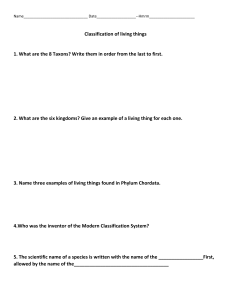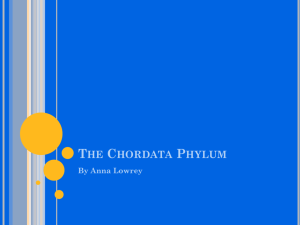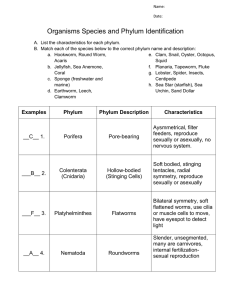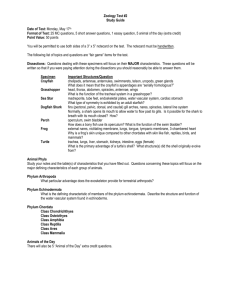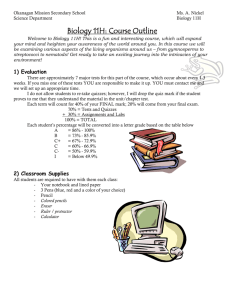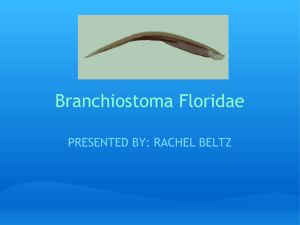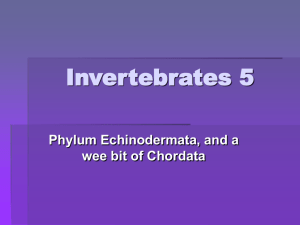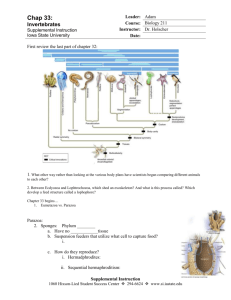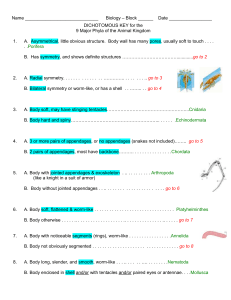The Deuterostomes
advertisement
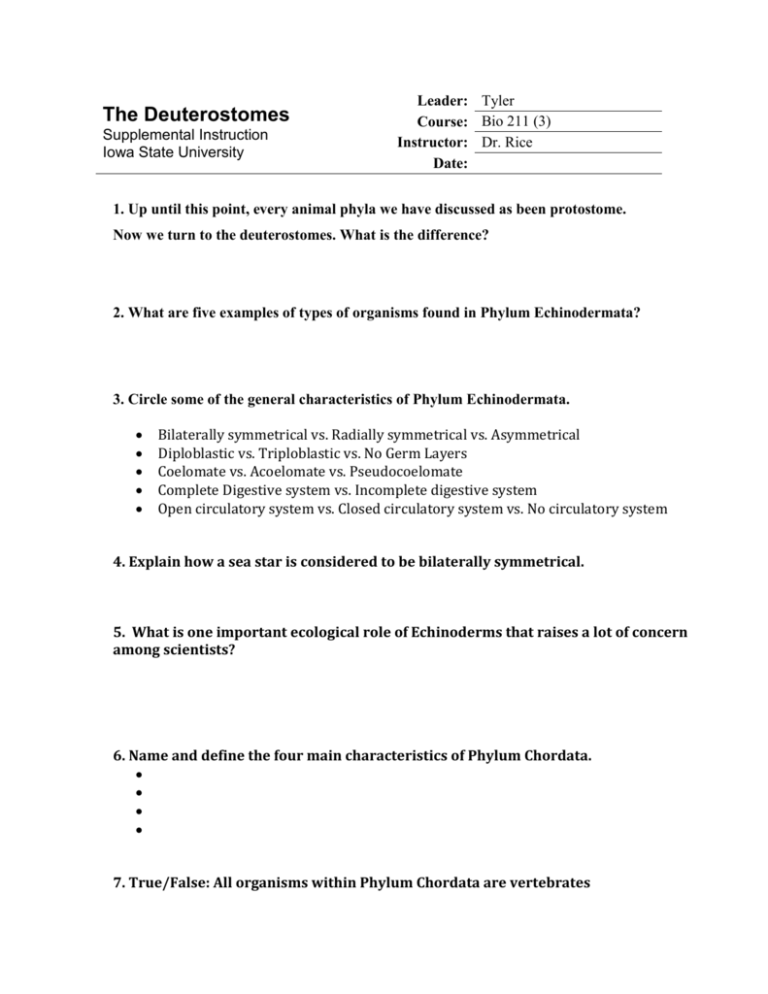
The Deuterostomes Supplemental Instruction Iowa State University Leader: Tyler Course: Bio 211 (3) Instructor: Dr. Rice Date: 1. Up until this point, every animal phyla we have discussed as been protostome. Now we turn to the deuterostomes. What is the difference? 2. What are five examples of types of organisms found in Phylum Echinodermata? 3. Circle some of the general characteristics of Phylum Echinodermata. Bilaterally symmetrical vs. Radially symmetrical vs. Asymmetrical Diploblastic vs. Triploblastic vs. No Germ Layers Coelomate vs. Acoelomate vs. Pseudocoelomate Complete Digestive system vs. Incomplete digestive system Open circulatory system vs. Closed circulatory system vs. No circulatory system 4. Explain how a sea star is considered to be bilaterally symmetrical. 5. What is one important ecological role of Echinoderms that raises a lot of concern among scientists? 6. Name and define the four main characteristics of Phylum Chordata. 7. True/False: All organisms within Phylum Chordata are vertebrates 8. Fill in the chart below regarding Phylum Chordata Sub Phylum Characteristics Examples 9. Name three characteristics that define the clade encompassing The Vertebrates. 10. Give an example of an organism within Sub Phylum Craniata without vertebrae? 11. Biology recognizes 8 classes within The Vertebrate clade. List them, and give a brief example of the type of animal you would find within each class. Which one is considered to be NOT a gnathostome?
